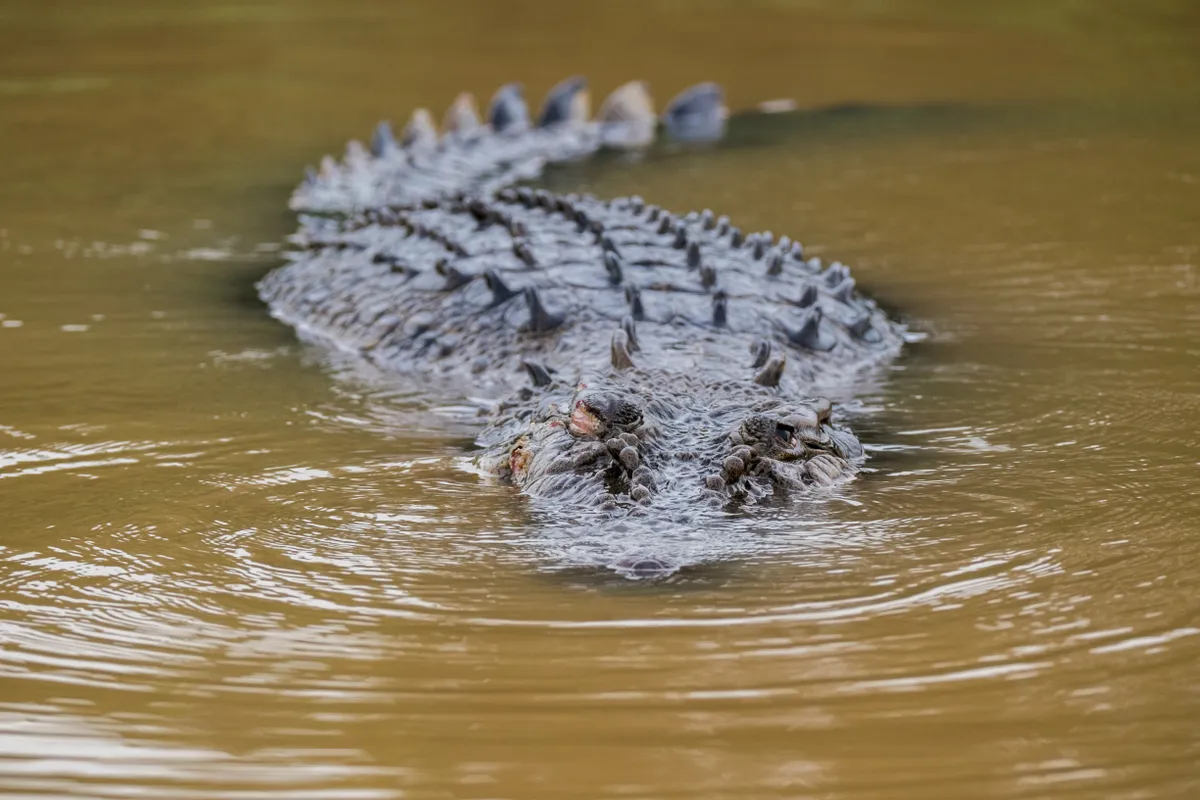From razor-sharp senses to fierce maternal instincts and unexpected ties to birds, these reptiles are remarkable.
Dive in to discover the most incredible secrets of one of the world’s largest and fiercest predators, the crocodile.
32 amazing crocodile facts
1. The saltwater crocodile is the largest reptile on the planet. Closely followed by the Nile crocodile and Orinoco crocodile.
2. They have the most powerful bite ever measured in any animal. In 2012, researchers recorded one saltie biting with a force of 16,460 newtons (equivalent to 1.6 tonnes).
3. The world's smallest crocodile is still a fairly formidable reptile at between 1.2-1.4m long. The Cuvier’s dwarf caiman is native to the rivers and streams of northern and central South America
4. Crocodiles are as old as dinosaurs. Well, almost. Crocodiles are part of the archosaur group, which first appeared about 250 million years ago. The earliest crocodilian evolved around 95 million years ago, in the late Cretaceous period. Modern crocodiles are descended from prehistoric water-dwelling animals with long snouts, powerful tails and many teeth.
5. They are related to ducks. As the only surviving descendants of a large evolutionary group called the archosaurs, crocodiles are actually closest living relatives of birds.
6. Saltwater crocodiles can live for more than 70 years. Although, there's a Nile crocodile in a South African conservation centre that is now 124 years old.
7. Their jaws are more sensitive than human fingertips. Tiny bumps on their jawlines help them detect predators in the water through changes in vibration.
8. The muscles that open the mouth are weaker than those that close it. A human can keep a saltwater crocodile's jaws closed using only their hands.

9. Their eyes are fine-tuned for lurking at the water surface. The fovea – normally a circular area of densely packed receptors – appears as a horizontal streak. This adaptation lets the animal scan the shoreline without turning its head.
10. Crocodiles can see underwater. They have a third eyelid, or transparent membrane, which covers and protects their eyes while allowing them to see under the surface.
11. Like dolphins crocodiles sleep with one eye open.
12. Their eyes shine at night because they have a special type of reflective layer behind the pupil known as tapetum lucidum.
13. There are 16 species of crocodile.
14. Crocodiles are not the same as alligators. They are both members of a single order of reptiles called the Crocodilia, but they belong to distinct families that separated about 90 million years ago.
15. Despite their similarities crocodiles and alligators can't crossbreed – they diverged too long ago. Successful hybridisation is only possible between species that diverged more recently, such as polar bears and brown bears.
16. They can't outrun humans. Despite hundreds of crocodile attacks on humans every year, most humans can outrun a crocodile.
17. Crocodile courtship can be surprisingly tender, involving snout-touching, neck-running, blowing bubbles and resting heads on each others' backs.
18. Crocodiles can't sweat. They lack sweat glands so they cool down by releasing heat by opening their mouths – 'mouth gaping'.
19. They are master ambush predators. Nile crocodiles, especially, lie in wait in the water for hours or days, often with only their eyes and nostrils above the surface, waiting to pounce on unsuspecting prey.
20. Like other members of the crocodilian group, they use the death roll technique to kill prey. They drag animals underwater, drowning and dismembering them by rolling them.
21. They go through thousands of teeth in their lifetime. Each crocodile has up to 100 teeth in its mouth, and it can replace a set every two to three years. Some species live up to 70 years – you do the maths!
22. Crocodiles can live in the sea. Saltwater crocodile (Crocodylus porosus), or more affectionately, ‘salties’, can live in fresh, brackish and saltwater. They are often found in the Indo-Pacific: from northern Australia to Southeast Asia and into India.
23. While most species of crocodiles can hold their breath for up to 30 minutes, some saltwater crocodiles can for up to nine hours.
24. They are faster in water than on land because of their powerful tails
25. Crocodiles can eat fruit. While traditionally classified as carnivores, and probably more likely to enjoy you as their lunch, observations show that many species consume various fruits.
26. They can leap straight out of the water to catch birds and flying foxes.
27. A large crocodile can go for up to a year without food. Its metabolism has evolved so that its body uses and stores nearly all the food it consumes.
28. Crocodiles swallow stones to help with digestion and balance.
29. Crocodile tears are a thing. The phrase refers to insincere or inauthentic remorse. A crocodile does leak water from its eyes, however, it is a fluid produced to lubricate them, rather than something it produces when upset or stressed.
30. Crocodiles lay their eggs in nests near water. The nests are either created from vegetation or sand and mud.
31. Female crocodiles will lay between 12 and 48 eggs per nest. They are hard shelled.
32. They are fiercely protective mothers. Egg incubation takes from 55 to 100 days and the female will stay close to the nest to protect them.
Main image credit: Getty




